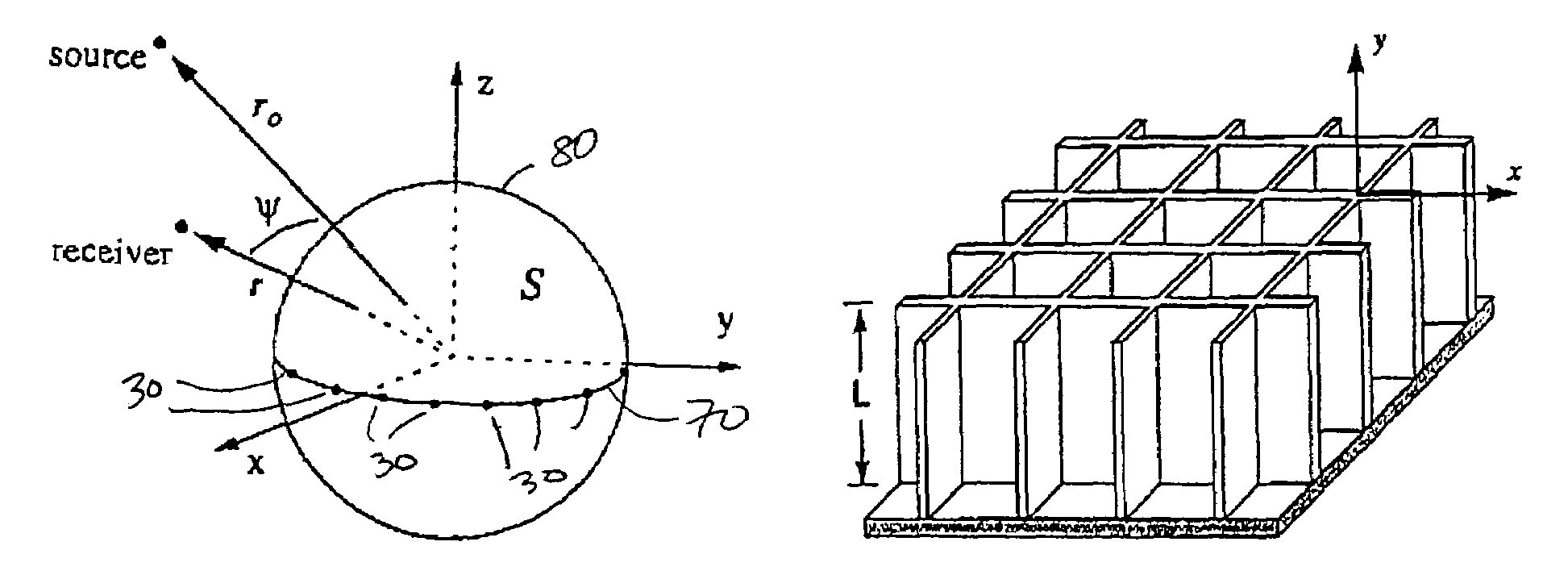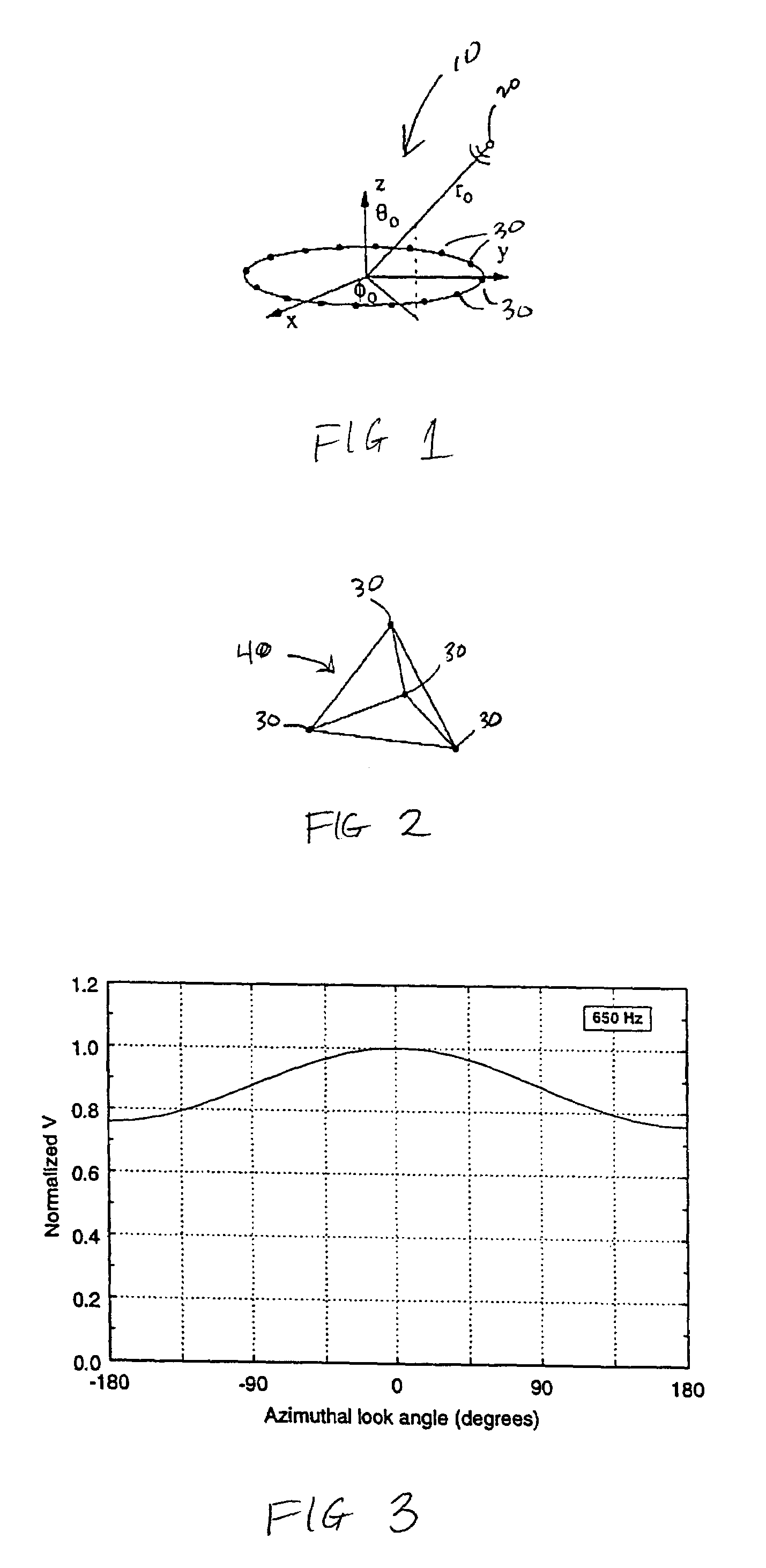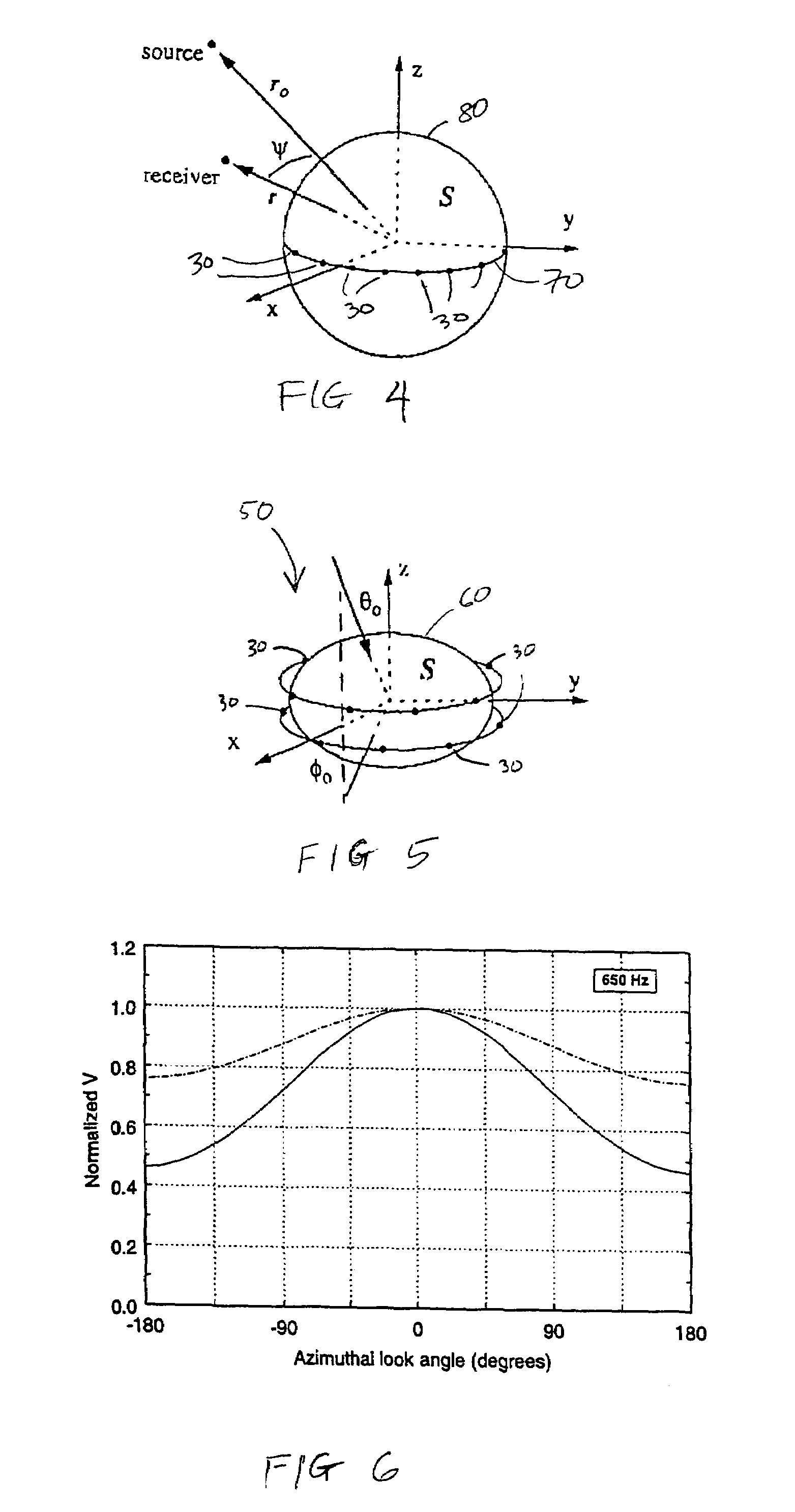Microphone array diffracting structure
a technology of microphone arrays and arrays, applied in the direction of electrical transducers, piezoelectric/electrostrictive transducers, transducer types, etc., can solve the problems of unsuitability for physical small arrays, unwieldy systems, and large array designs, so as to increase the effective aperture size and directionality of microphone arrays
- Summary
- Abstract
- Description
- Claims
- Application Information
AI Technical Summary
Benefits of technology
Problems solved by technology
Method used
Image
Examples
Embodiment Construction
[0037]To analyse the effect of introducing a diffracting structure in a microphone array, some background on array signal processing is required.
[0038]In a microphone array the separate signals from the separate microphones are weighted and summed with a processor to provide an output signal. This process is represented by the equation:
[0039]V∝∑m=1Mwmpm
where V is the electrical output signal;[0040]wm is the weight assigned to the particular microphones;[0041]M is the number of microphones; and[0042]pm is the acoustic pressure signal from a microphone.
[0043]The weights are complex and contain both an amplitude weighting and an effective time delay τm, according to
wm=|wm|e(+iωτm)
where ω is the angular sound frequency. An e(−iwt) time dependence is being assumed. Both amplitude weights and time delays are, in general, frequency dependent.
[0044]Useful beampatterns can be obtained by using a uniform weighting scheme, setting |wm|=1 and choosing the time delay τm so that all microphon...
PUM
 Login to View More
Login to View More Abstract
Description
Claims
Application Information
 Login to View More
Login to View More - R&D
- Intellectual Property
- Life Sciences
- Materials
- Tech Scout
- Unparalleled Data Quality
- Higher Quality Content
- 60% Fewer Hallucinations
Browse by: Latest US Patents, China's latest patents, Technical Efficacy Thesaurus, Application Domain, Technology Topic, Popular Technical Reports.
© 2025 PatSnap. All rights reserved.Legal|Privacy policy|Modern Slavery Act Transparency Statement|Sitemap|About US| Contact US: help@patsnap.com



